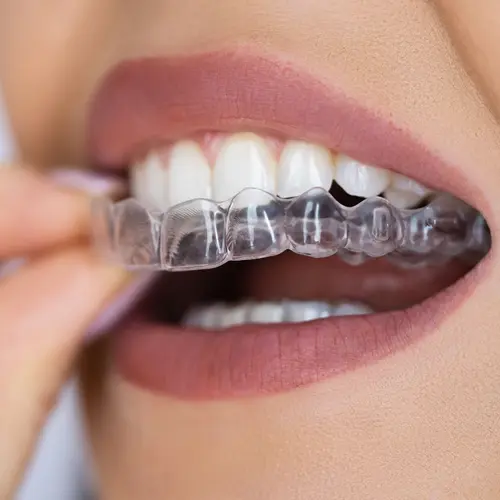Certain types of food wear down your teeth. The longer these foods stick to the surface of your teeth, the more acidic your mouth will become, leading to the formation of cavities. When this happens, tooth decay starts setting in, damaging the enamel as it progresses in five different stages.
Left untreated, tooth decay will damage your teeth and gums to the point where the only real remedy will be either a root canal or a tooth extraction. Read on to learn more about tooth decay, how it progresses, and how it can be treated.
What Is Tooth Decay?
Tooth decay occurs when foods high in carbohydrates, such as fruits, candy, bread, or milk, stick to the surface of your teeth. Bacteria in your mouth will then digest these bits of food and turn them into acid, resulting in the buildup of plaque on your teeth.
Since plaque is acidic, it can dissolve the enamel coating on your teeth and create holes in them called cavities.
The symptoms of tooth decay are:
- Sudden tooth pain, particularly when you drink or eat cold, hot, or sweet things
- Dark spots on your teeth
- Pain when biting
- Cavities, also known as caries.
The 5 Stages of Tooth Decay
As time passes, tooth decay progresses through the five stages. Here's a look at each one.
1. Demineralization
During the first stage of tooth decay, the outer layer of your teeth — the enamel — starts to weaken due to the presence of plaque.
Enamel is the toughest substance in your body — harder than your bones. However, the acid produced by plaque can demineralize and weaken enamel.
When demineralization sets in, you'll likely start seeing white spots on your teeth. This is where the plaque has started whittling away your tooth enamel.
You can reverse the damage done by the plaque by using fluoride mouthwash more often or getting fluoride treatment from your dentist.
2. Enamel Decay
If you allow your enamel to continue breaking down, the white spots will start turning brown. Now, you've progressed to the second stage of tooth decay when the enamel starts to deteriorate and cavities begin to form.
You’ll need to get tooth fillings to prevent your cavities from growing larger. Your dentist will remove the decayed parts of the tooth and fill the hole with resin, gold, silver amalgam, or ceramic.
3. Dentin Decay
If your cavities aren’t filled in time, your dentin could eventually get damaged as well. Dentin is the part of the tooth that's under the enamel. Softer than enamel, it's much more sensitive to acid damage.
Tooth decay will speed up from this point on if you don’t see a dentist. You'll know you are at this third stage of tooth decay when you start feeling extreme tooth sensitivity while drinking hot or cold drinks, especially sugary types, as well as while eating.
If dentin decay is identified early on, it can be fixed with a filling. If substantial damage has occurred, your dentist will likely remove the decayed portion of your tooth and place a crown over the remaining tooth structure.
4. Damaged Pulp
The pulp is the layer beneath the dentin. It's the bottom-most part of your tooth and houses blood vessels and nerves that sustain and provide sensation to the tooth.
Once tooth decay has spread to the pulp, your tooth may begin to swell. Pressure will start to increase since your tooth can’t expand along with the pulp, causing some pain. The last stage of pulp damage involves pulp death, also known as pulp necrosis.
You may experience the following symptoms when your pulp dies:
- Color of the tooth changes from white to gray to black
- Tooth has a bad smell
- Swelling around the tooth
- Unpleasant taste in your mouth
You'll need to have a root canal to treat your tooth’s damaged pulp. During the procedure, your dentist will clear out the damaged pulp, fill in the resulting cavity, and place a protective crown on the tooth.
5. Abscess Formation
In this final stage of tooth decay, bacteria get inside the decaying pulp, which typically leads to infection. Eventually, an abscess may form at the bottom of your tooth, causing severe pain that can spread to the rest of your mouth, gums, face, and jaw.
If a root canal won’t do the trick, you'll likely need to have the tooth removed to avoid having the infection spread to the bones in your jaw or other parts of your head. You may also have to take antibiotics to kill the bacteria.
How to Prevent Tooth Decay
Preventing tooth decay begins with stopping plaque buildup. You can do this by:
- Brushing your teeth at least twice a day with fluoride toothpaste
- Rinsing and flossing every time you eat something sticky, acidic, or high in carbohydrates, particularly chocolate and citrus fruits
- Using interdental cleaners and floss to get rid of as much food debris as possible
- Using fluoride mouthwash at least once a day to kill plaque
- Asking your dentist about getting dental sealants on your molars to protect them from decay
- Drinking fluoride water
- Visiting your dentist at least once a year for checkups and oral cleaning.
It's important to keep an eye on what you eat if you want to prevent tooth decay. Avoid drinking acidic carbonated drinks and avoid eating sweet, sticky snacks such as candy bars and caramel.
If you do eat these foods, make sure to brush right after eating them. The longer you go without brushing after eating these types of foods, the more likely you will experience tooth decay.
